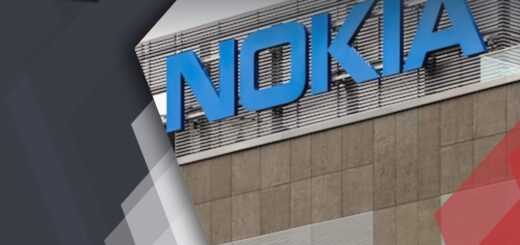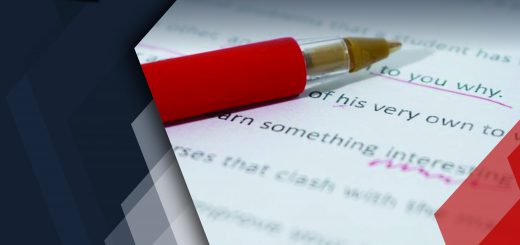Drafting AI Patents – Challenges and Solutions
Artificial Intelligence (AI) is the latest buzzword across all sectors. Every tech or non-tech company is vigorously filing, strategizing or planning to enter the AI patent domain. However, the journey is not as easy as it may seem! While drafting AI-based patent applications, drafters often face challenges in formulating the right strategy for writing claims and identifying the correct scope of application. Read this article to know the challenges in detail and our pragmatic solutions to draft a patent-worthy application.
Before moving on to the challenges, let us first understand the key aspects of AI-based inventions or patent applications.
Table of Contents
3 Key Aspects of AI Inventions
It is imperative to identify the correct combination of these aspects so that an invention at hand is suitably protected. Notably, not all AI patent applications emphasize on all three aspects, although they might be indirectly related. The three aspects are:

Challenges Related to Drafting AI Patent Applications
While drafting, it is vital to identify which of the three aspects should be covered solely or in combination, when seeking legal protection. Depending on the approach chosen, the patent drafter may face one or more of the three main challenges:

- Patent Ineligibility: The invention or process stands the risk of being considered as abstract and patent-ineligible. This implies that it may get classified as an “abstract idea” by virtue of implementing a series of steps or operations that could possibly have been carried out in “mind” or by using “pen and paper”. For example, complex mathematical calculations.
- Divided Infringement: Divided infringement refers to the issue wherein multiple parties are required to infringe on all the clauses mentioned in an independent claim. Thereby, it makes the invention or the process less profitable for the assignee.
- Infringement Detectability: Detectability refers to the ease with which infringement of a patent by a product or service can be detected. Difficulty in detecting the infringement lowers commercialization potential of the underlying patent.
Understanding Challenges with the Help of Case Studies
Case Study 1: Assuming an invention pertains to the training of a neural network and novelty lies in the way it is trained
In this scenario, from a novelty perspective, a claim covering the training procedure should be framed. However, this approach has few shortcomings that should be considered:
- Claim infringement:
Conventionally, the training of the neural network is done offline in research labs, not in real-time. For example, let’s assume a neural network is trained for picking up an object and is further implemented on a robot. In this case, what one can see in real-time is the robot picking up an object. Here, the task performed is the result of the invention, not the invention itself.
So, one can’t detect infringement because the claimed training is generally done offline. Therefore, the difficulty in detecting infringement makes it hard to file a lawsuit.
2. Shortcomings in terms of patent-eligible subject matter:
The claim plainly covering the training procedure is not considered to be patent-eligible subject matter. Such a claim is highly prone to 35 U.S.C. § 101 rejection in the US. For instance, the United States Patent and Trademark Office (USPTO) may assert that the claim is directed towards an abstract idea.
In order to mitigate such problems, one must frame the claim in accordance with USPTO’s example 39. Similarly, in specifications, one must meticulously describe how the claimed training procedure solves problems related to training of the neural network. For example, it requires less training data; can be trained with different data (e.g., labelled and unlabelled), and allows the neural network to be trained faster. Lastly, describe the practical application of the trained neural network, i.e., showcase its utility.
While the aforesaid solutions may solve the patent-eligible subject matter problem, the shortcoming in terms of claim infringement persists. This is the drawback of this case.
Case Study 2: Let’s assume that the invention related to training of the neural network and execution of the neural network for a specific application is claimed.
Using this approach has certain advantages. First, the utility of the neural network is directly outlined in the claim, which might make it patent-eligible subject matter. Second, when the applicant claims the execution of the neural network, the infringement detectability is improved. This is because it can be seen in real-time. However, there are certain drawbacks of this approach as well:
- Inactive Recitation of Active Steps of Invention
Generally, in such a claim, the training procedure is claimed using ‘wherein clauses’. This is because the training is done offline and the execution takes place in real-time. For example, ‘wherein’ the neural network is trained based on [enter training aspects].
It is evident that the training process, where the novelty lies, is not claimed actively. Furthermore, claiming inactively yields the impression that there already exists a pre-trained neural network that is now being used to execute a particular workflow. As a result, the claim interpretation may incline towards the way of executing the neural network rather than the way of training the neural network.
2. Difficult Infringement Enforcement Due to Divided Infringement
If one claims execution of the neural network, along with actively claiming the training aspect, it may lead to divided infringement. For instance, let’s assume that the neural network is trained by company X, and it is integrated with a robot manufactured by company Y. This implies that the robot manufactured by company Y is receiving and processing the input with the neural network produced by company X. So, it results in divided infringement. The involvement of two entities makes the enforcement of infringement difficult and expensive.
Case Study 3: Let’s assume that the invention is related to execution of neural network and a claim covering proposed execution of neural network is framed.
Take for example that the invention may be related to a particular way of using a known neural network (e.g., autoencoder). It can be used for a specific application or modification to the structure of neural network. Furthermore, it can be utilized for transforming input data to a new form, such that the transformed data can be used with known neural networks for a specific application. In this case, a claim that covers proposed execution of the neural network can be framed.
The purpose behind using such a claim is that it clearly outlines practical application and is less susceptible to 35 U.S.C. § 101 rejection. Thereby, it solves the problem of patent-ineligible subject matter. Also, the claim includes aspects that are detectable in real-time, which resolves the infringement detection problem.
However, this claim may also suffer from the limitation of being too narrow, as it is focused on a specific application using a specific type of neural network only.
Final Thoughts
There is no one-size-fits-all solution when it comes to drafting claims of a patent application in AI domain. A practitioner must weigh the pros and cons of each approach outlined above, and then choose the right one keeping in mind their client’s strategy, budget and core competencies.
Thus, realizing that every approach has certain drawbacks and benefits, one should adopt a strategy to protect the invention in light of future planned research and business strategy of the assignee and/or inventors. Furthermore, always find where the novelty lies and formulate a strategy to claim the invention accordingly. Lastly, no matter what kind of AI invention it is, always describe practical application of the invention in claims and specifications. In addition to that, describe technology-centric solution to a problem or technical improvements provided by the invention to make it patent-eligible subject matter.
Sagacious IP’s patent drafting services are designed to strengthen patent applications through broadest possible coverage. Our subject matter experts effectively draft AI-based patent applications and ensure that they remain error-free and technically sound.
-Aastha Uppal, Kartik Kulkarni (ICT Drafting) and the Editorial Team




